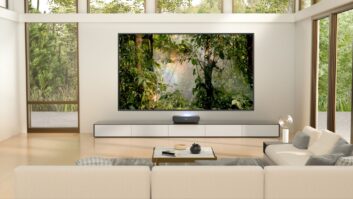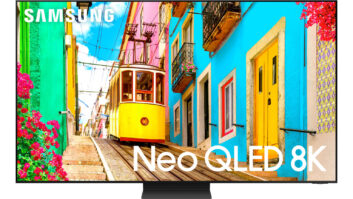Washington – Leading CE vendors called on the Federal Communications Commission (FCC) to quickly approve the digital cable interoperability agreement they struck with the cable industry in December to keep the digital television transition moving forward.
The plea was made by a number of top CE companies in formal responses to a May 20th request for information about the digital television transition from the FCC’s media bureau chief Kenneth Ferree
In those statements, virtually all manufacturers said they were on track to meet or exceed the FCC’s deadlines requiring integrated ATSC tuners in TV sets, and that they are actively involved in the promotion of HDTV to consumers and in the education of retailers on digital television products and issues.
Many reminded that they have supported HDTV programming with national and regional advertising, and are actively engaged in retail sales training in addition to offering informational point-of-sale literature and signage.
In addition to approving the cable plug and play agreement, CE makers said the FCC needs to take action to ensure both broadcasters and cable operators continue to move forward in getting digital signals to the public.
Philips Consumer Electronics, for example, called for the following:
- Ensure terrestrial broadcasters transmit digital signals at full power in order to mitigate reception problems in troublesome areas and to reach all consumers in their current designated market areas.
- Ensure local broadcasters pass through network HDTV programming in full resolution.
- Expedite digital carriage agreements of broadcast stations by local cable operators.
- Encourage broadcasters to better promote their HDTV programming with advertising on their analog channels and by clearly identifying HDTV content in program guide listings.
The need for a cable interoperability directive colored CE manufacturers’ responses to virtually all the questions asked by the FCC.
Manufacturers became concerned after the recent National Cable and Telecommunications Association (NCTA) show, where FCC chairman Michael Powell indicated a decision on the plug and play ‘memorandum of understanding’ might not be considered until September.
This, many manufacturers said, would interfere with product planning cycles and may mean that delivery of truly ‘cable-ready’ digital television sets may not be available until late 2004 or later.
At the same time, consumers are likely to hold off digital television purchases as they wait for the cable-ready television sets and plug-and-play enabled components to arrive.
‘We anticipate that the majority of consumers, who will be shopping for HDTV sets, will be expecting cable-ready products that work seamlessly with existing cable networks,’ Thomson stated in its remarks to the Commission. ‘For this reason, it is imperative that the Commission rapidly adopt the HDTV Plug & Play agreement that is now pending before the FCC.’
Mitsubishi’s statement said the FCC’s delay in passing a cable plug-and-play agreement could put the DTV transition ‘at serious risk.’
‘The Commission’s mandate for integrated digital tuners effective July 1, 2004, coupled with delay in putting in place rules for cable compatibility, will result in consumers being forced to buy expensive technology that they cannot use,’ said Mitsubishi marketing VP Bob Perry in his remarks to Ferree.
Toshiba stated: ‘We urge the FCC to accept this inter-industry proposal, and take the steps necessary to put it into regulation by mid-summer 2003. This timing is necessary for us to develop digital cable products for delivery to consumers in 2004. And, we believe that introduction of these digital cable products is necessary for the industry to keep the digital transition on track.’
In responding to the FCC question about its planned deployment of digital connectors on DTV sets and digital set-top boxes, Zenith said its ‘current plan is to include both the DVI-HDCP and IEEE-1394-DTCP protected inputs on all integrated digital-cable ready plug and play HDTV receivers beginning in the 2004 model year.’
However, Zenith cautioned, that the plan ‘is dependent upon the timing of the FCC’s approval of the Memorandum of Understanding between the cable and consumer electronics industries, setting forth the standards and specifications for the introduction of plug and play digital television cable products and services.’
Pointing to wording in the FCC’s query on manufacturers’ plans to build ATSC over-the-air tuners in all DTV sets produced ‘with integrated QAM tuning for plug and play’ cable compatibility, Sony reminded the commission that, ‘cable compatibility requires more than just a QAM tuner.’
‘We urge the Commission to act on these proposals without delay so products entering the market by the beginning of the July 2004 DTV tuner phase-in can be plug-and-play compatible with digital cable,’ Sony’s statement added.
Virtually all television manufacturers said they would continue to build ATSC tuners into cable-ready DTVs.
However, Mitsubishi’s Perry warned that ‘should the Commission not enact rules regarding cable compatibility [Mitsubishi] may be forced by the competitive market — which closely reflects the value for which consumers are willing to pay — to transition certain products to be classified as monitors and not televisions, and therefore not be subject to the Commission’s Digital Tuner mandate.’
Regarding the effectiveness of DTV tuners, most manufacturers stated they have delivered products that satisfactorily receive signals for most consumers, and added that each subsequent generation has delivered reception improvements.
However, Philips reminded that ‘the principals of physics dictate that without sufficient signal strength, acceptable consumer reception will not occur.’
‘Even today, five years into the DTV transition and over a year after the May 2002 deadline for commercial broadcasters to be on the air, according to FCC published data, the majority of those broadcasters are not operating at full transmission power,’ Philips said. ‘For those broadcasters to complain that their signals cannot be received solely due to receiver issues is disingenuous and ignores the true cause, insufficient signal strength.’
Similarly, Thomson suggested that the FCC, ‘at a very minimum should establish an interim deadline of July 1, 2004 (concurrent with the first digital tuner/decoder deadline), by which all broadcasters must transmit a digital signal of sufficient strength to serve their entire Grade A contour.’
Sony added that it is concerned that the lack of adequate broadcast signal strength may inhibit sales of digital televisions, because consumers may be unable to determine whether digital signals are present at their location.’
Most manufacturers also said they are now beginning to add copy protected digital interfaces — either DVI with HDCP or IEEE-1394 with DTCP or both — to their DTV sets, monitors and peripheral devices, with plans to include protected digital connections on virtually all consumer DTV products in the future.
However, Thomson reminded the Commission that in addition to digital interfaces, ‘We believe that the high-definition analog connection will need support for a period of several years, as this has been the primary method of porting HDTV content from set-top receiver to display since the transition began in 1998.’
‘Millions of consumers will depend upon the analog high-definition Y Pr Pb connection for high-definition content until the affected industries successfully migrate to secure connections.’













